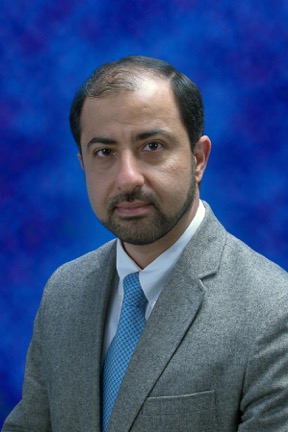 DETROIT – The results of a sleep apnea study conducted by Wayne State University School of Medicine researchers at the John D. Dingell VA Medical Center could change the way physicians diagnose and manage the treatment of symptomatic sleep apnea patients.
DETROIT – The results of a sleep apnea study conducted by Wayne State University School of Medicine researchers at the John D. Dingell VA Medical Center could change the way physicians diagnose and manage the treatment of symptomatic sleep apnea patients.
Sleep-disordered breathing, or SDB, also known as sleep apnea, is a common chronic condition linked to hypertension and cardiovascular disease, and characterized by a spectrum of abnormal respiratory events, including periods of stopped breathing, known as apnea, or reduction in the amplitude of breathing, known as hypopnea. Abnormal respiratory events lead to decreased oxygen level in the blood and/or fragmented sleep. It is usually treated with nasal continuous positive airway pressure, or CPAP, therapy.
Mild respiratory events do not meet the current definition of apnea or hypopnea, but the WSU study published Jan. 12 in the Oxford journal “Sleep” challenges that definition.
“This study confirms that mild respiratory events that do not reach current thresholds for the definition of ‘abnormal events’ have an impact on heart rate and lung mechanics, and can improve with CPAP. Accounting for these abnormal respiratory events in clinical practice may have significant implications for diagnosis and outcome particularly in patients with daytime or sleep-related symptoms,” said WSU Associate Professor of Medicine Abdulghani Sankari, M.D., Ph.D.
Sankari is the principal investigator of the study “Characteristics and Consequences of Non-apneic Respiratory Events During Sleep,” available online.
"Our study showed that subtle respiratory events without associated decrease in oxygen level or awakening from sleep may have potentially deleterious physiologic consequences, including decreased lung volume, increased airway resistance, increased work of breathing and transient heart rate accelerations. These potentially significant respiratory events are challenging to identify reliably. Interestingly, we found that these events were associated with a similar increase in heart rate to classical hypopnea. Therefore, these heart rate bursts can be used to detect SDB without the need for sophisticated physiological recording such as electroencephalography,” Sankari said.
In collaboration with another university, the research team is assessing the long-term consequences of the respiratory events and the associated heart rate changes on cardiovascular outcome using its large epidemiological database.
Sankari thanked his research team and collaborators who co-wrote the paper, including his mentor Safwan Badr, M.D., professor of Internal Medicine and chief of the School of Medicine’s Division of Pulmonary, Critical Care and Sleep Medicine.
“I would like also to thank the participants in this study and the VA office for research and development for their support and funding,” Sankari said.
The work was supported by Career Development and Merit Review awards from the U.S. Department of Veterans Affairs’ Clinical Science Research and Development Services. The authors are also supported by the Detroit Medical Center Foundation, the Cardiovascular Research Institute of WSU, and the National Institutes of Health’s National Heart, Lung and Blood Institute (R01HL130552).
About Wayne State University School of Medicine
Founded in 1868, the Wayne State University School of Medicine educates more than 1,000 medical students annually in Midtown Detroit. In addition to undergraduate medical education, the school offers master’s degree, Ph.D. and M.D.-Ph.D. programs in 14 areas of basic science to about 400 students annually. Follow us on Twitter and Instagram @waynemedicine | Facebook/WayneStateMedSchool
Wayne State University is a premier urban research institution offering more than 380 academic programs through 13 schools and colleges to more than 27,000 students.
